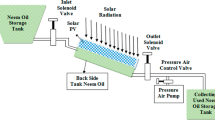Abstract
Increasing demand is fueling the booming polyurethane industry worldwide. An impeding issue for polyurethane industry is how to handle the large quantity of hydrogen chloride byproduct generated from the synthesis of intermediates, i.e., isocyanates. In the meantime, the traditional chloro-alkaline process suffers both from the high energy intensity of electrolysis method and the disparity in the chlorine and caustic soda market. To solve these problems, the state-of-the-art chlorine recycling technologies are reviewed and compared. Approaches for cost-effective utilization of chlorine in polyurethane industry are investigated. Chinese academies and enterprises’ on-going effort on the development of a novel hydrogen chloride oxidation process for the synthesis of chlorine is presented. With this process, the closed loop recycling of chlorine can be realized. Tremendous economic, environmental and social benefits can be expected. A wide adoption of this technology will significantly advance the sustainable development of polyurethane industry.
Similar content being viewed by others
References
Ma Deqiang, Ding Jiansheng, Song Jinhong. Progress in the production of organic isocyanates[J]. Chemical Industry and Engineering Progress, 2007, 26(5): 668–669 (in Chinese).
Li Qiong. Caustic soda: Increasing capacity and saturated market persist[J]. China Petroleum and Chemical Industry, 2010(2): 20 (in Chinese).
Bayer Polymer LLC. Process for Purification of Anhydrous Hydrogen Chloride Gas[P]. US2003196764A1. 2003-10-23.
Bayer MaterialScience AG. Process for Producing Isocyanates[P]. US20090166180. 2009-07-02.
Dow Global Technologies. Sealer Compositions[P]. US20060270778. 2006-11-30.
BASF Corporation. Process for Manufacturing Isocyanates and Producing Reagent Grade Hydrochloric Acid Therefrom [P]. US5756063. 1998-05-26.
Chemical News & Intelligence (ICIS). BASF shutdown of TDI unit to tighten eastern Germany HCl market [EB/OL]. www. allbusiness. com. Thursday, April 2011.
Krupp Uhde Gmbh. Process for Recycling Waste Hydrochloric Acid[P]. PCT Application: WO9731859. 1997-09-04.
Bayer AG. Process for the Electrolysis of Technical-Grade Hydrochloric Acid Contaminated with Organic Substances Using Oxygen-Consuming Cathodes[P]. US6402930B1. 2002-06-11.
Wu Yulong, Wei Fei, Han Minghan et al. Research progress of recycling chlorine from hydrogen chloride[J]. Chinese Journal of Process Engineering, 2004, 4(3): 269–273 (in Chinese).
Tang Jihai. Technical analysis on the integrated application of hydrogen chloride byproduct in China[C]. In: National Conference of Advocation for Energy Saving and Emission Reduction in Petroleum and Chemical Industries. 2008. 297–326 (in Chinese).
Shell Oil Co. Process for the Production of Chlorine[P]. US3210158. 1965-10-05.
Shell Int Research. Procédé de préparation du chlore[P]. US, FR1277805. 1961-12-01.
Medalert In. Recovery of Chlorine from Hydrogen Chloride by Carrier Catalyst Process[P]. US4959202. 1990-09-25.
Medalert In. Recovery of Chlorine from Hydrogen Chloride by Carrier Catalyst Process [P]. EU, EP0474763. 1992-03-18.
Medalert In. Recovery of Chlorine from Hydrogen Chloride by Carrier Catalyst Process [P]. DE69018072. 1995-08-17.
Mitsui Toatsu Chemicals. Production of Chlorine [P]. CN1003852. 1987-09-30 (in Chinese).
Mitsui Toatsu Chemicals. Production of Chlorine[P]. EU, EP0233773. 1987-08-26.
Mitsui Toatsu Chemicals. Production of Chlorine[P]. BR8700757. 1987-12-22.
Mitsui Toatsu Chemicals. Production of Chlorine[P]. JP19860032925. 1987-08-21.
Mitsui Toatsu Chemicals. Industrially Production of Chlorine[ P]. JP1795150. 1987-11-30.
Sumitomo Chemical Co. Production of Chlorine[P]. JP10338502. 1998-12-22.
Sumitomo Chemical Co. Process for Producing Chlorine[ P]. CN1182717. 1998-05-27 (in Chinese).
Sumitomo Chemical Co. Process for Producing Chlorine[ P]. US2002172640. 2002-11-22.
Sumitomo Chemical Co. Reactor for Producing Chlorine and Process for Producing Chlorine[P]. US2010296998A1. 2010-11-25.
Sumitomo Chemical Co. Method for Activating Catalyst for Chlorine Production[P]. EU, EP2181764A1. 2010-05-05.
BASF AG. Reactor and Method for Producing Chlorine from HCl[P]. US2007183963A1. 2007-08-09.
BASF AG. Method for Producing Chlorine[P]. US2008159948. 2008-07-03.
BASF AG. Method for Producing Chlorine [P]. CN200680005928. 2. 2008-02-20 (in Chinese).
BASF AG. Method for Producing Chlorine[P]. EU, EP1866239. 2007-12-19.
Bayer MaterialScience. Processes for the Preparation of Chlorine from Hydrogen Chloride and Oxygen[P]. US2007274898A1. 2007-11-29.
Bayer MaterialScience. Process for the Production of Isocyanates[ P]. US2007249859A1. 2007-11-15.
Chen Xian, Tang Jihai. Study on reaction kinetics of hydrogen chloride oxidation over micron catalyst Ce-Cu-K/ReY[J]. China Powder Science and Technology, 2009, 15, Suppl (in Chinese).
Nanjing University of Technology. A Method of Conversion of HCl to Cl2 by Coupling Oxidation Reaction and Dewatering[P]. CN200710023245. 6. 2007-11-14 (in Chinese).
Chang Peiting, Hu Gangshi, Han Minghan et al. Conversion of hydrogen chloride to chlorine in a two-zone circulating fluidized bed reactor[J]. The Chinese Journal of Process Engineering, 2006, 6(1): 47–50 (in Chinese).
Tsinghua University. Technological Process and Equipment for Catalytically Oxidizing HCl to Produce Cl2[P]. CN200710063495. 2008-02-27 (in Chinese).
Chen Zhitao, Han Minghan, Wang Dezheng et al. Influence of cerium on the stability of copper-based oxychlorination catalyst[J]. Chinese Journal of Catalysis, 2008, 29(10): 951–953 (in Chinese).
Bayer MaterialScience. Processes for Obtaining Chlorine from Mixtures of Chlorine, Water, Hydrogen Chloride and Oxygen, and Incorporation of Such Processes into Isocyanate Production Processes[P]. US2007274900A1. 2007-11-29.
Bayer MaterialScience. Processes for the Production of Organic Isocyanates[P]. US2007276154A1. 2007-11-29.
Bayer MaterialScience. Bayer Process for the Coupled Production of Chlorine and Isocyanates[P]. US2007265-466A1. 2007-11-15.
Bayer Italia. Bayer Constructed a Chlorine Recycling Plant for TDI Production in Shanghai[EB/OL]. www.bayer.it. 2008-12-18 (in Italian).
Author information
Authors and Affiliations
Corresponding author
Additional information
DING Jiansheng, born in 1954, male, professor level senior engineer.
Rights and permissions
About this article
Cite this article
Ding, J., Hua, W., Hu, B. et al. Closed loop recycling of chlorine for sustainable development of polyurethane industry. Trans. Tianjin Univ. 17, 298–304 (2011). https://doi.org/10.1007/s12209-011-1645-x
Accepted:
Published:
Issue Date:
DOI: https://doi.org/10.1007/s12209-011-1645-x




